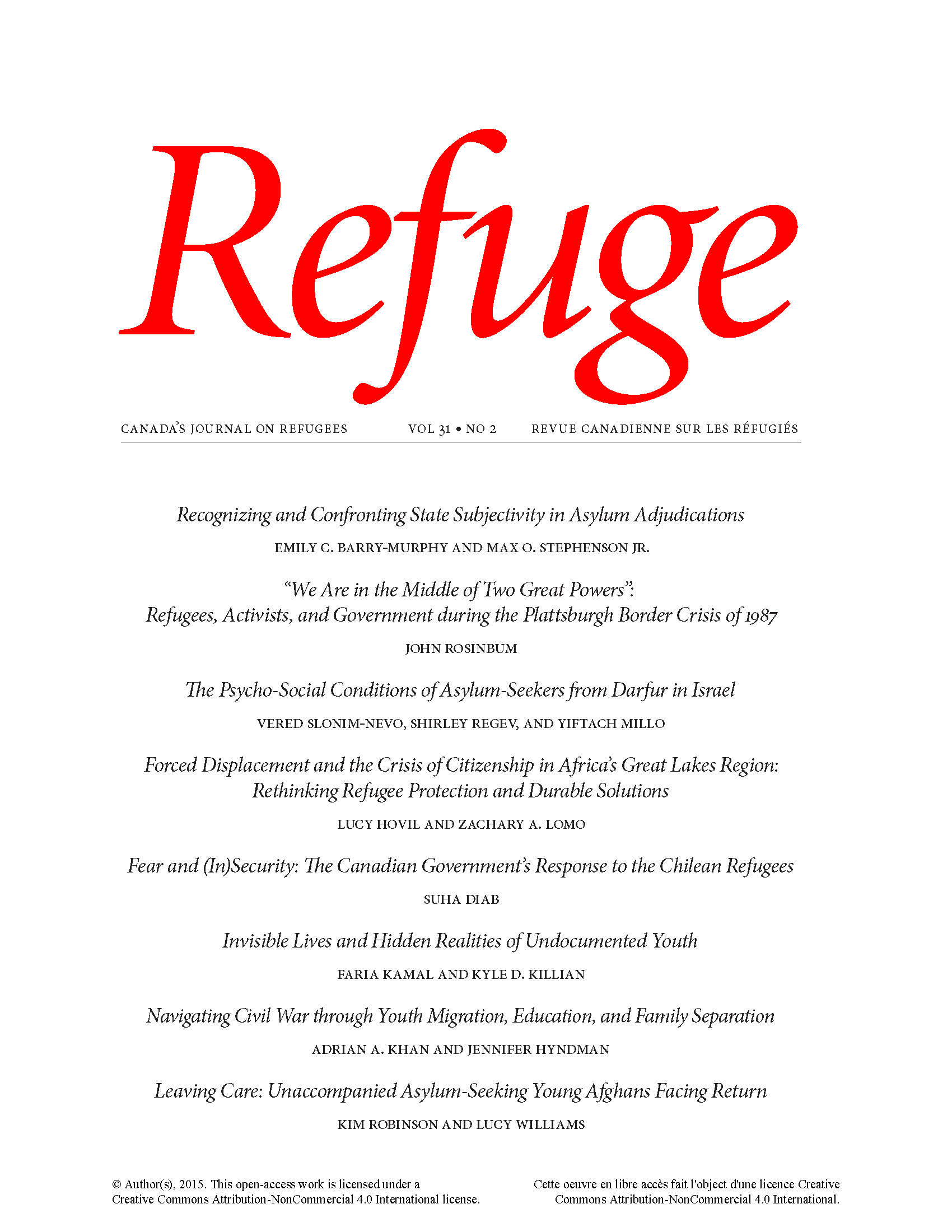Navigating Civil War through Youth Migration, Education, and Family Separation
DOI :
https://doi.org/10.25071/1920-7336.40311Mots-clés :
Nepal, Himalayan region, People's War, civil war, youth migration, family separation, internal migration, children's geographiesRésumé
Qu’est-ce qui a motivé certaines jeunes personnes de quitter leurs villages trans-himalayens et de poursuivre leurs études dans le contexte d’une institution scolaire, avec le risque que cela comportait d’être séparé de leurs familles pour une période prolongée, et cela à un âge très précoce? Une étude en profondeur de jeunes personnes provenant de villages trans-himalayens ruraux, qui ont effectué le trajet jusqu’à la capitale Katmandu, afin d’y vivre et de faire leurs études à un pensionnat (gratuit) subventionné par des bénévoles nationaux ainsi qu’internationaux, constitue un point de départ pour aborder cette question. La « Guerre populaire » au Népal, qui a duré de 1996 jusqu’à 2006, fournit un contexte à l’étude, étant donné que l’insurrection maoïste dans l’arrière-pays himalayen avait pour but de recruter les jeunes à la cause des insurgés. Cette étude de jeunes personnes de la région trans-himalayenne, résidant au pensionnat en tant qu’étudiants, a été menée à Katmandu entre avril et juin 2014. Les jeunes, âgés de 4 à 10 ans à la date de leur arrivée à l’école, restaient sans voir leurs familles pendant plusieurs années après leur arrivée, en raison des distances considérables entre leurs villages et l’école, et les frais de voyage qui s’y associaient. En se basant sur les travaux universitaires en géographies des enfants, les récits de ces jeunes servent à mettre l’accent sur leur capacité d’action et d’initiative dans le contexte de ces biographies de migration, et à mieux comprendre la nature de ces séparations difficiles en période d’instabilité politique et de guerre civile.
Statistiques
Téléchargements
Publié-e
Comment citer
Numéro
Rubrique
Licence
© Adrian A. Khan, Jennifer Hyndman 2015

Cette œuvre est sous licence Creative Commons Attribution - Pas d'Utilisation Commerciale 4.0 International.
Les auteurs qui publient dans Refuge conservent le droit d’auteur associé à leur œuvre, et octroient au public une licence Creative Commons Attribution - Utilisation non commerciale 4.0 International. La licence permet l’utilisation, la reproduction et l’adaptation du matériel avec attribution par tous moyens et sous tous formats pour des fins non commerciales. Pour des informations générales sur les licences Creative Commons, visitez le site Creative Commons. Pour la licence CC BY-NC 4.0, consultez le résumé lisible par l'homme.







